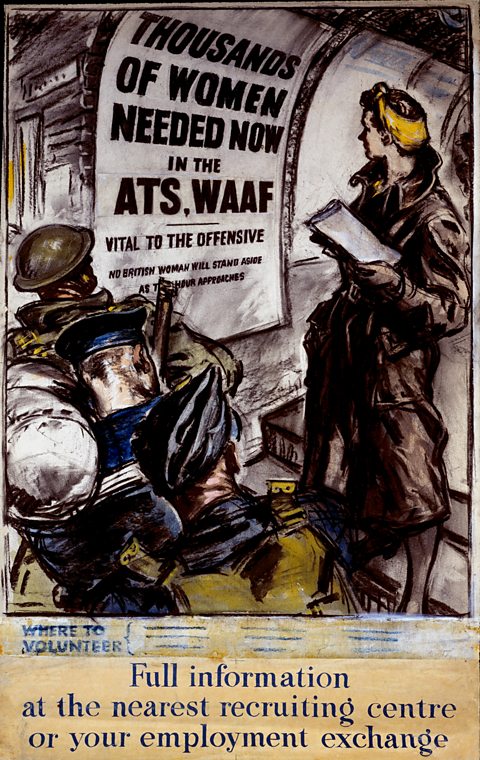The contribution of women to the war effort
From 1939, and throughout the Blitz, many women joined an organisation called the Womenâs Voluntary Service (WVS). They helped in numerous ways to ease suffering. This group had one million members by 1943 and usually consisted of older women.
Their roles included knitting balaclavas and socks for servicemen, providing refreshments for those who sheltered in the underground and helping people who had lost their homes in the German bombings. Women collected scrap metal needed for the war effort. In Portsmouth, this group collected enough scrap metal in four weeks to fill four railway carriages.
Womenâs contribution to the war was not properly organised until 1941, when the labour shortages became apparent. From December 1941, women aged 19-30 were conscripted for war work and by 1943, 17 million women were either in the forces or engaged in work for the war. Government propaganda urged women to aid the war effort. The key message was Thereâs Not Much Women Canât Do
.

Women worked in factories to produce essential war material, such as aircraft, vehicles and munitions. The workforce at the gigantic munitions factory in Bridgend, known as ROF 53, was predominantly female. Of the 32,000 people who worked there, approximately three-quarters were female.
Women enlisted in a number of different forces.
- Womenâs Auxiliary Air Force (WAAF)
- Auxiliary Territorial Service (ATS)
- Womenâs Royal Naval Service (WRENS)
By the end of the war in 1945, there were 450,000 women in the military. They also performed nursing roles at hospitals, including military ones. Many of the code breakers at Bletchley ParkDuring World War Two, it housed British codebreakers employed by the Government. were women. In nearly all occupations however, women performing the same task as men were paid less.
The Womenâs Land Army was created during both World War One and World War Two to help ease the shortage of male farm labour, this was essential to secure food production and operate farm machinery.